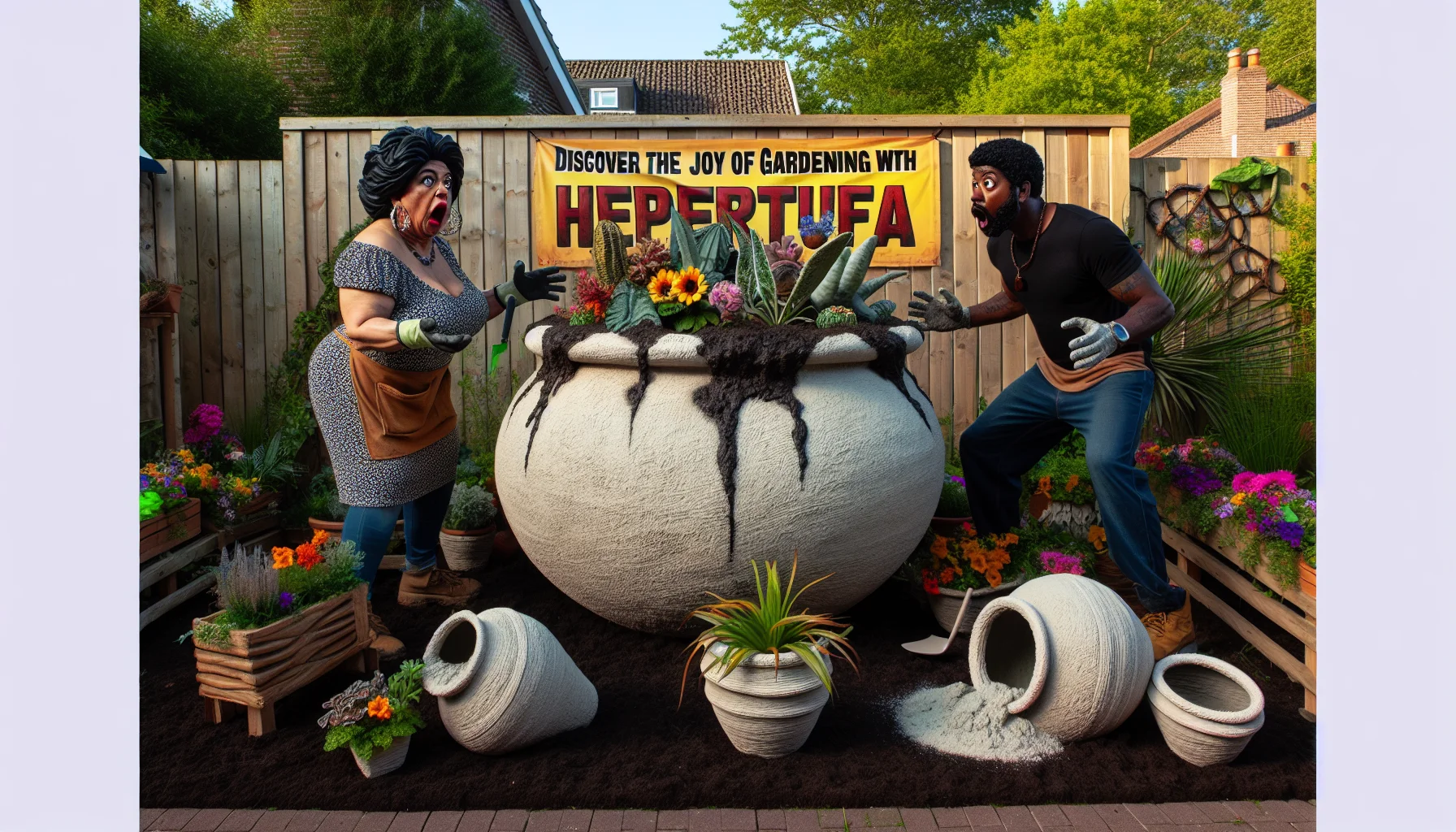Exploring Hypertufa Quiz
Test Your Knowledge
Question of
Exploring Hypertufa
Hypertufa is a highly versatile and lightweight artificial stone material made from a mix of Portland cement, peat moss, and perlite or vermiculite. This concoction is favored by gardeners and landscapers for its porosity, which is ideal for plant growth, and its rustic, natural stone appearance. Hypertufa can be molded into various shapes, making it perfect for creating custom planters, garden ornaments, and even water features. Its durability and resistance to weather conditions make it a popular choice for outdoor garden projects, allowing enthusiasts to add a unique and personal touch to their garden spaces.
Benefits of Using Hypertufa in Your Garden
- Lightweight yet durable material, easy to move and design with.
- Provides excellent drainage, helping to prevent root rot in plants.
- Mimics a natural stone look, enhancing the aesthetic appeal of your garden.
- Retains moisture well, reducing the need for frequent watering.
- Environmentally friendly, made from readily available and natural materials.
- Resistant to harsh weather conditions, ensuring longevity.
- Customizable into various shapes and sizes, offering creative freedom.
- Non-toxic, making it safe for planting edibles and supporting wildlife.
How to Make Your Own Hypertufa Pots
Making your own hypertufa pots is a fun and easy way to create unique, rustic containers for your plants. Follow these steps to create your own:
- Gather your materials: you will need Portland cement, peat moss, perlite, water, and a mold of your choice.
- In a large mixing container, combine 1 part Portland cement, 1.5 parts peat moss, and 1.5 parts perlite. Mix these dry ingredients thoroughly.
- Add water slowly to the dry mix, stirring constantly until the mixture has the consistency of cottage cheese.
- Prepare your mold by applying a non-stick agent or lining it with a plastic bag for easier removal of the hypertufa pot.
- Press the hypertufa mixture into the mold, making sure to press firmly to eliminate any air pockets. The thickness of the walls should be around 1 to 2 inches, depending on the size of the mold.
- Cover the mold with plastic and let it cure in a cool, shaded area for 24 to 48 hours.
- After the curing period, carefully remove the hypertufa pot from the mold. It will still be somewhat soft, so handle it gently.
- Allow the hypertufa pot to dry and cure further for about 2 to 3 weeks. During this time, keep it in a shaded area and mist it occasionally to prevent it from drying out too quickly.
- Once fully cured, your hypertufa pot is ready to use. You can further personalize it by adding a patina of moss or yogurt to encourage a weathered look.
Design Ideas for Hypertufa Projects
Embarking on hypertufa projects offers a unique blend of creativity and functionality for your garden. Hypertufa, a lightweight and porous material, is perfect for crafting custom planters, birdbaths, and garden sculptures that blend seamlessly with the natural landscape. Consider creating a series of trough planters in various sizes to add depth and interest to your garden beds. Alternatively, sculpt whimsical fairy houses or toadstools as enchanting focal points among your plants. For a practical yet stylish touch, design stepping stones with embedded leaf patterns or personalized mosaics. Let your imagination guide you, and the rustic charm of hypertufa will do the rest to enhance your garden's beauty.
Caring for Your Hypertufa Creations
To ensure the longevity and beauty of your hypertufa items, proper care and maintenance are essential. First, it's important to cure your hypertufa properly after crafting, which often involves a moist curing process to strengthen the material. Once cured, placement in a suitable location that mimics the hypertufa's natural preference for a slightly moist environment can help. Regular cleaning with a soft brush and water is recommended to keep surfaces free of algae and dirt. In freezing climates, consider moving your hypertufa creations indoors or providing a protective cover during the winter months to prevent cracking. Lastly, inspect your items periodically for any signs of wear or damage and repair them promptly to preserve their beauty and structural integrity.
Frequently Asked Questions About Hypertufa
| Question | Answer |
|---|---|
| What is hypertufa? | Hypertufa is a manufactured substitute for natural tufa, which is a slowly precipitated limestone rock. It is a mixture of Portland cement, peat moss, and perlite or vermiculite, used to make garden ornaments, pots, and sculptures. |
| How do you make hypertufa? | To make hypertufa, mix together 1 part Portland cement, 1.5 parts peat moss, and 1.5 parts perlite or vermiculite. Add water slowly until the mixture reaches a cottage cheese-like consistency. Mold into desired shape and let cure. |
| How long does it take for hypertufa to cure? | Hypertufa typically takes about 24 to 48 hours to set, but it should be kept moist and allowed to cure for at least 2 to 3 weeks before being put into use. |
| Can hypertufa be left outside in winter? | Yes, hypertufa is frost-resistant and can be left outside during winter. However, it should be properly cured and sealed to prevent water absorption and subsequent freeze-thaw damage. |
| Is hypertufa environmentally friendly? | While hypertufa uses natural materials like peat moss and perlite, the production of Portland cement, a key component, is energy-intensive and emits CO2. However, hypertufa items can last for many years, reducing the need for replacements. |












